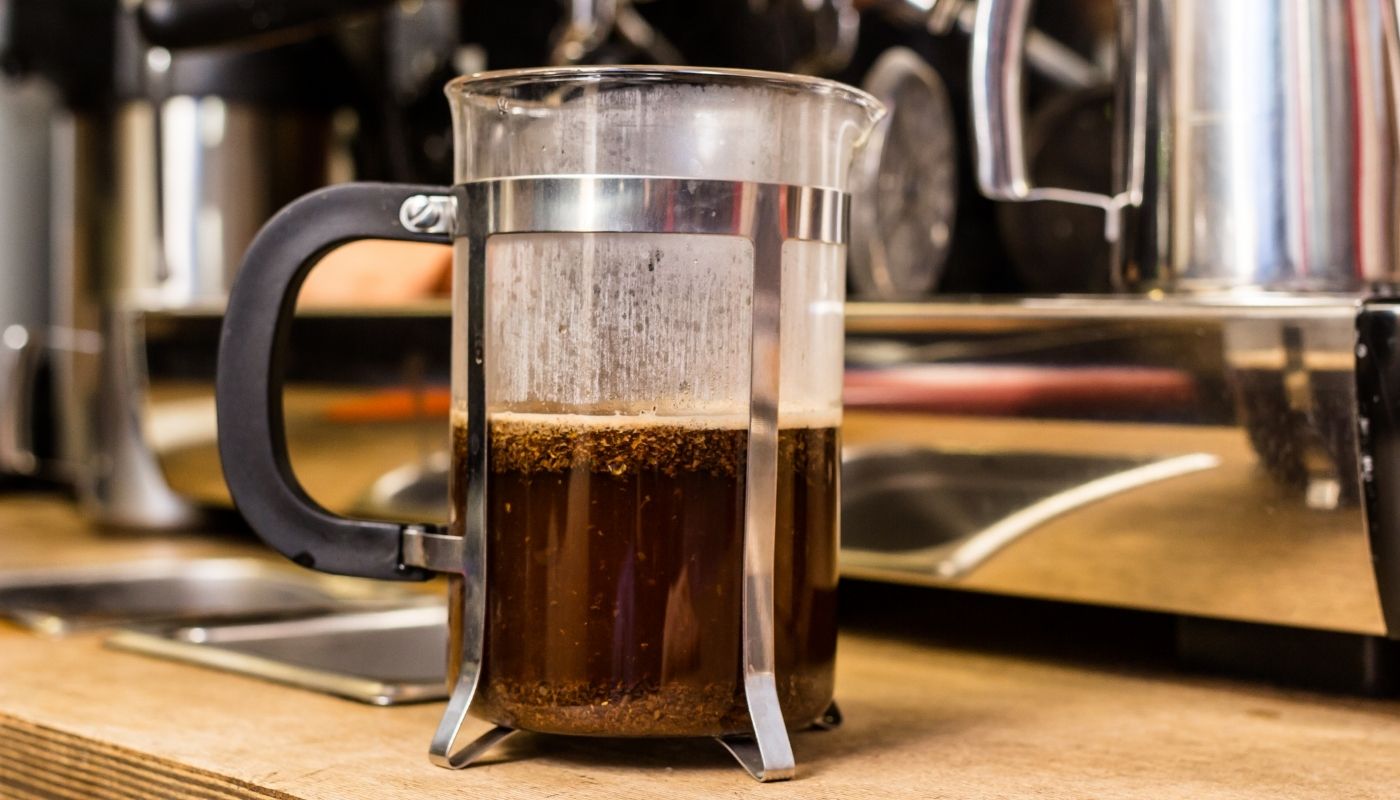French press Coffee Grinder is a favorite brewing method for many coffee lovers. Coffee enthusiasts love the flavor profile of their cup of joe because it is not as bitter as other methods like an espresso machine or drip coffee maker. And while you can brew great coffee with any type of grinder, the French press grind size should be coarse to get the best results. Let’s take a look at what this means and why it matters in more detail!
Things to consider when choosing a french press coffee grinder
- One of the most important things to consider when selecting a coffee grinder for the French press is what kind you should use. Coffee beans are usually ground into a fine powder that allows water to extract all the flavors and oils easily, but with brewing more like espresso in a French Press, coarse grinds work best because they don’t have as many fines so they won’t get stuck on top of your brewed cup.
- When grinding finer grounds, it is easy for them to become over-extracted and release bitter tastes that can ruin an otherwise good brew. This is why we recommend using either a blade or burr grinder depending on how much time you want to spend cleaning up afterward! Blade grinders might be faster than other types but will need to be cleaned more often because they are not very precise.
Best French Press Coffee Grinder
- Breville Smart Grinder Pro Coffee Machine Burr Mill. It is a high-quality device that has 40 different settings and will not break the bank.
- A burr grinder is the best option for the coffee grinder for French press because it uses two metal discs that crush beans as you turn them. The downside of using this type of grinder, however, is a high-end cost and increased cleaning time due to smaller openings in-between parts where grounds can get stuck. While blade grinders might have less cleanup time, the consistency may suffer since these types don’t produce consistent particle sizes when crushing beans!
Burr grinder vs. a blade grinder
- The electric motor of a blade grinder may heat up and potentially burn your hands if you are grinding enough grounds or using it too long! Burr grinders aren’t as likely to overheat but their higher price point makes them less accessible than blade models. Blade machines also need more cleaning time because they have smaller openings where ground particles can get stuck after use – whereas burr models don’t produce any loose grounds during operation so there’s no place for them to hide!
- The electric motor of a blade grinder may heat up and potentially burn your hands if you are grinding enough grounds or using it too long! Burr grinders aren’t as likely to overheat but their higher price point makes them less accessible than blade models. Blade machines also need more cleaning and are not as reliable when it comes to the consistency of your grind.
Why Purchase A French Press Coffee Grinder?
This is why buying a coffee grinder specifically made for French press use is so important! The steel blades on these devices have been strategically placed in such a way that they will never heat up and touch any part of your hand while you’re grinding away, making them all around safer to use. They also require less cleaning and produce more consistent grounds that don’t clog up the filter basket-like blade models can do with their larger pieces. If you want something affordable yet still high-quality, check out our top pick here: Breville Smart Grinder Pro Coffee Machine Burr Mill. With its 40 different settings (so many!) this machine has what every coffee enthusiast needs.
What Are The Different Types Of Electric Coffee Makers And Which One Is Right For You? –
- When it comes to electric coffee makers there are two main types; drip or automated machines with carafe design (similar to what you see in your typical office) and pour-over machines with a cone-shaped filter designed specifically for making single cups of coffee.
- Porlex Tall Hand Grinder with Integrated Metal Filter – this is the hand grinder that we used when testing for our article on “Best Coffee Grinders For French Press”. It has a sleek design and an intuitive construction which makes it easy to use, no matter what level of expertise you have in using grinders.
Burr grinder vs. a blade grinder
A burr grinder is a type of coffee maker that uses two revolving abrasive surfaces to crush the beans into a uniform size giving you more control over how coarse or fine your grinds are. This means that it can be used for different applications, including French Press and Espresso machines without sacrificing consistency in taste. A blade grinder on the other hand will give you inconsistent results and won’t work as well with finer grinds, basically making them not ideal for use with French press coffee makers because they have an uneven distribution of particles due to their design.
How To Grind Coffee Beans For The French Press
First, start by opening up the top part of the bean container so that there’s enough space inside for the coffee beans.
Next, flip it over and push down on one side to allow enough room for your hand to fit inside the other container so that you can scoop up a handful of beans. Next, take those beans in your hands and run them between both palms as if pressing green grapes with two fingers–except this time just using cupped hands instead of thumbs. This will produce small pieces or chunks about the size of cereal grains, these are called “coarse grinds” (also known as “French Press Grind”). Some people prefer a coarser grind when making French press because they believe it’s easier for pushing through grounds without getting stuck at the bottom, but others like their espresso even finer by putting beans in an electric grinder and running them through one time.
Two Fundamental Reasons for Using Coarse Grinds in a French Press
- The first reason to use coarse grinds in a French press is that the coarser grind will produce more surface area of beans, which means a stronger flavor. This also means there’s less room for water, so you’ll want to use about double what you would normally use if using ground espresso (aka “fine grind”). If your coffee grinder has an adjustable setting, start with it set on “coarse” and adjust as needed after tasting later batches–just be sure not to go too far, or else you’ll end up with grounds all over!
Coffee should never come into contact with metal because this can shorten its lifespan due to oxidation.*
- The second reason to use coarse grinds in a French press is that they will dissolve more quickly and completely when heated, which means you’re less likely to end up with bitterer coffee.
It’s also worth noting that once your beans are ground for the first time, it becomes difficult (or impossible) to adjust their coarseness afterwords. So be sure before grinding!
Coffee should never come into contact with metal because this can shorten its lifespan due to oxidation.
French Press Coffee Grinder Size
- French Press grind size is usually about a teaspoon (or slightly less) per cup of coffee. This may sound like a lot, but remember that the finer you go with your grinds the more sugars are released and this gives it an extra bitter flavor. If you want to be precise then use a scale to measure out what’s appropriate for each cup.
If you want to get the best use of your French press coffee grinder, then simply make sure that it’s coarse enough.
Frequently Asked Questions
What kind of grinder do you use for a French press?
| A conical burr grinder is generally your best option with regards to brewing a tremendous cup of French press espresso, and there are numerous electric models accessible from which you can select. Those are available at many exclusive price points, and the extra high-priced the machine, the greater features it consists of. |
How long do you grind coffee beans for French press?
| Coarse Grind for French Press for 5-10 seconds. Medium Grind for electric drip or most Pour-Over methods is 10-15 seconds. Fine Grind for espresso machines grinds approximately 30 seconds. |
Should you Stir French press?
| Don't stir before [time] is up! When you stir, the grinds fall out of suspension and the extraction slows down considerably. |





